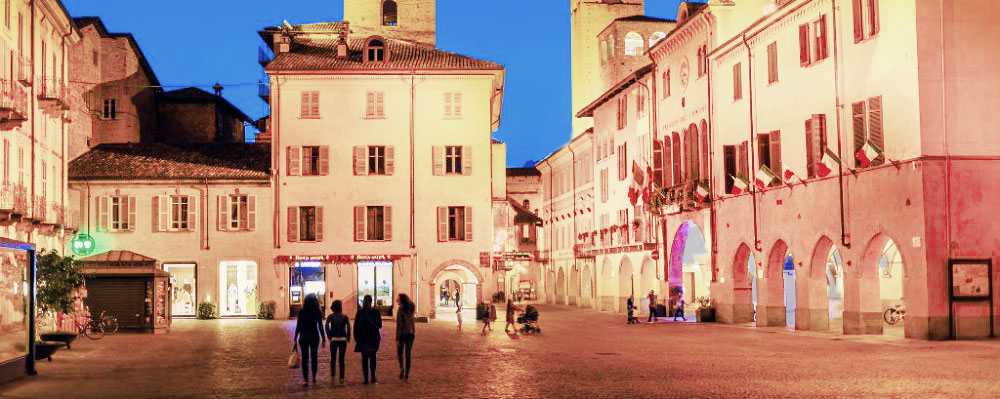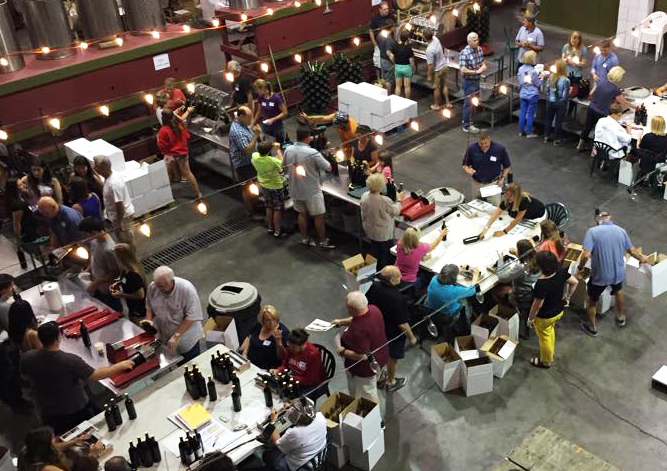The rolling hills of the Langhe wine region of Piedmont are both beautiful to the eye and engaging to the palate. World renowned for its excellent wine and during the autumn months, the town of Alba becomes the focus of international attention as it receives visitors from around the globe who seek the white truffles so famously found around the town. Truffles are one of the most mysterious of gourmet items. The truffles of Alba grow in the wild and they are becoming rarer every year, as the forests are cleared to plant more Nebbiolo grapes. Also, since truffles are fungi, they tend to grow best in cool wet weather. This summer in Italy has been anything but cool and wet! The year has been one of the driest and hottest on record, with the Borolo harvest starting nearly three weeks ahead of schedule. By law, the season for black truffles ends on September 1 and the season for white truffles officially began last week on September 21. A truffle hunter and his dogs can spend up to eight hours hunting for a handful of truffles. It is not uncommon to spend 20 or 30 minutes to dig up a single truffle. A truffle hunt as a visitor will normally last for an hour to 90 minutes.
Rare and expensive, the process of finding the highly fragrant, supposcred aphrodisiac, is as seetive as grave robbing. Into the night go the truffle hunters and their extraordinary dogs. The dogs may be one of several breeds, but the favored type is the Lagotto Romagnolo. Trained for years, their keen sense of smell allow the dogs to detect the scent of the truffles growing on the roots of trees, sometimes well below the surface. Black truffles grow near the surface, but white truffles grow much deeper, normally a foot or more. Since the fungi have not adapted well to cultivation (hint for amateur botanists and fungologists – if you find a way to grow and harvest white truffles, the world will beat a path to your door), the time and labor intensive search results in high prices for the prized consumable. Truffle hunting can be a highly profitable occupation. A good night will return $1,000 or more in valuable white truffles, but a poor night returns nothing. In addition to his dog, the hunter, the trifolao, gathers his tools of the trade – a shovel for digging, a flashlight for seeing and a soft cloth to hold any truffles that are found. He may spend 45 minutes driving or walking in a random fashion to ensure he is not being followed and will then move to the location he has pinpointed as a fertile hunting ground. The dog will be hungry. A Trifolao knows that is it important to treat their dogs well (and with the cost of a well-trained dog exceeding $5,000, they certainly should be well-looked after), but the dogs focus far better when they haven’t eaten since the previous morning. The hunter will look at different stands of trees to determine where the best candidates are. Oak is a perennial favorite, but poplar, willow and linden also attract the fungus to their roots. Truffles can grow rapidly, just like mushrooms, although their cell structure is far denser. That is another reason that trifolao search at night. In the Piedmont, humidity is higher at night in the fall and it seems that the dogs can smell the truffles better while they are growing. Silence fills the night, you barely hear your footfalls along the path, even the dog’s pants are faint in the still night. Moving slowly through the night, you watch for the dog to give a sign that a scent has been detected. After more than an hour, no truffles have been detected. That is part of the reality. You begin to prepare yourself for the disappointment of a fruitless search, when suddenly the dog’s panting becomes rapid and she begins to circle about four feet from the trunk of a linden tree. Your heart begins to race as your trifolao says, “Lei è qui.”
He calmly takes out his shovel and begins to dig. The ground is moist on top and the rich earth yields to his pointed shovel. Within five minutes, his hole is two feet wide and several inches deep. Now he becomes more like an archeologist, slowly, carefully digging near the perimeter of the hole. He is trying to determine the depth of the roots. He finds them roughly 14 inches below the surface. Now the excavation proceeds slowly, tracing the roots back, shining the light on every fiber, looking for the white nuggets. The dog is still panting, knowing she will get a reward if a truffle is found. Ten minutes go by, then suddenly an exclamation, “Ah la mia bellezza.” He has struck gold! A largish, marble-sized white truffle has been found. The night is a success! Smiles and congratulations are offered. You ask to smell the newly discovered truffle and find its aroma almost intoxicating. Going on a truffle hunt is a combination of a ghost walk and a treasure hunt. It is great fun to walk and watch the process. The dogs are amazing and if you ever have the opportunity to visit Alba during truffle season, make sure that you book a truffle hunt.
Truffles are not the only attraction to the area surrounding Alba. The Langhe wine region, in the southern part of Piedmont, is stunningly beautiful. It is a series of sweeping landscapes, hills covered with vineyards and dotted with tiny picturesque towns and castles. The Langhe produces the well-known Barolo, Barbaresco and Dolcetto wines. Alba is right in the heart of the Langhe region and is about a one hour drive from Torino.
Alba is not only beautiful, it is a superb place to eat and is known as the gourmet capital of Piedmont. As well as truffles, the area is known for chocolate – it is where Ferrero Rocher and Nutella come from and where the legendary Gianduia was invented.
The old town center of Alba is beautifully preserved and has a wonderful atmosphere. Strolling the streets and piazza of Alba on a Sunday afternoon and taking in the sights is a delightful experience, especially when it follows a hearty lunch of rabbit, polenta, agnolotti and a robust bottle of Barbera wine.
In addition to the countryside, there are several historic sites to visit. Originally a Roman city, parts of the fortified gate and remains of some edifices with marble and mosaics can still be seen. You’ll want to see the Palazzo Comunale, dating from the 13th century, which houses a Nativity by Macrino d’Alba that dates back to 1501. As you walk or drive through the town, you’ll also notice several towers from the 14th and 15th centuries still remain. Alba was once known as the “City of One Hundred Towers.”
Visitors should take in the Romanesque Duomo di Alba, also known as the Cattedrale di San Lorenzo. It was built in the 12th century over temples dating back to Roman times. The church is famed for its wood-carved choir loft made in 1512 by Bernardino Fossati. The current belfry, from the 12th century, contains the original bell tower. The Duomo is located in the Piazza del Risorgimento, better known as Piazza Duomo, amidst the cobbled streets in the center of town.
The Gothic Church of San Domenico dating to the 13th and 14th centuries, is perhaps the most historically interesting church in Alba. Its portal contains a triple arch within a larger pointed arch, while inside there remain traces of Renaissance frescos. These treasured works of art sustained significant damage during the Napoleonic Wars, when the church was, unbelievably, used as a stable by Napoleon’s troops. It was re-consecrated in 1827.
There is also the Baroque Church of St. John the Baptist, housing a Madonna of the Graces (1377) by Barnaba da Modena and a Madonna with Saints (1508) by Macrino d’Alba. With its beauty, history, wine and culinary arts, Alba must be experienced at least once in a lifetime.





